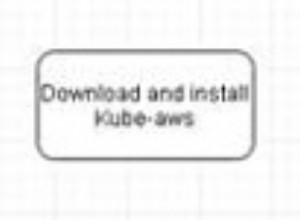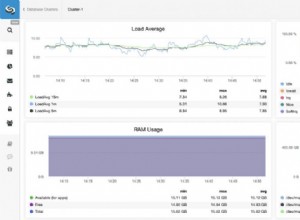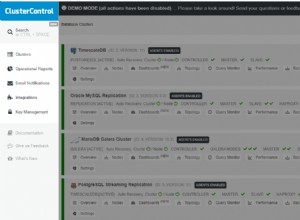यहाँ कुछ स्क्रिप्ट हैं जो मैंने रिवर्स इंजीनियरिंग SQL सर्वर स्कीमा के लिए लिखी हैं। वे कुछ काम के हो सकते हैं। साथ ही, एक सामान्य रुचि के रूप में वे कुछ उदाहरण देते हैं कि डेटा डिक्शनरी से विभिन्न बिट्स की जानकारी कैसे प्राप्त करें। मैंने अनुमति-से-उपयोग स्पष्ट करने के लिए और कुछ बुनियादी गैर-निहित-वारंटी सीवाईए के लिए नीचे एक एमआईटी लाइसेंस जोड़ा है। आनंद लें।
-- ====================================================================
-- === reverse_engineer_2005.sql ======================================
-- ====================================================================
--
-- Script to generate table, index, pk, view and fk definitions from
-- a SQL Server 2005 database. Adapted from one I originally wrote
-- for SQL Server 2000. It's not comprehensive (doesn't extract
-- partition schemes) but it does do defaults and computed columns
--
-- Run the script with 'results to text' and cut/paste the output into
-- the editor window. Set the schema as described below.
--
-- Copyright (c) 2004-2008 Concerned of Tunbridge Wells
--
-- Permission is hereby granted, free of charge, to any person
-- obtaining a copy of this software and associated documentation
-- files (the "Software"), to deal in the Software without
-- restriction, including without limitation the rights to use,
-- copy, modify, merge, publish, distribute, sublicense, and/or sell
-- copies of the Software, and to permit persons to whom the
-- Software is furnished to do so, subject to the following
-- conditions:
--
-- The above copyright notice and this permission notice shall be
-- included in all copies or substantial portions of the Software.
--
-- THE SOFTWARE IS PROVIDED "AS IS", WITHOUT WARRANTY OF ANY KIND,
-- EXPRESS OR IMPLIED, INCLUDING BUT NOT LIMITED TO THE WARRANTIES
-- OF MERCHANTABILITY, FITNESS FOR A PARTICULAR PURPOSE AND
-- NONINFRINGEMENT. IN NO EVENT SHALL THE AUTHORS OR COPYRIGHT
-- HOLDERS BE LIABLE FOR ANY CLAIM, DAMAGES OR OTHER LIABILITY,
-- WHETHER IN AN ACTION OF CONTRACT, TORT OR OTHERWISE, ARISING
-- FROM, OUT OF OR IN CONNECTION WITH THE SOFTWARE OR THE USE OR
-- OTHER DEALINGS IN THE SOFTWARE.
--
-- ====================================================================
--
set nocount on
-- This does a specific schema. Set the schema here
--
declare @schema varchar (max)
select @schema = 'dbo'
if object_id ('tempdb..#objects') is not null begin
drop table #objects
end
if object_id ('tempdb..#views') is not null begin
drop table #views
end
if object_id ('tempdb..#types') is not null begin
drop table #types
end
-- Gets lists of tables and views belonging to the schema
--
select o.name
,o.object_id
into #objects
from sys.objects o
join sys.schemas s
on s.schema_id = o.schema_id
where o.type in ('U')
and s.name = @schema
select o.name
,o.object_id
into #views
from sys.objects o
join sys.schemas s
on s.schema_id = o.schema_id
where o.type in ('V')
and s.name = @schema
-- Some metadata for rendering types
--
select a.*
into #types
from ((select 'decimal' as typename, 6 as format) union all
(select 'numeric', 6) union all
(select 'varbinary', 1) union all
(select 'varchar', 1) union all
(select 'char', 1) union all
(select 'nvarchar', 1) union all
(select 'nchar', 1)) a
-- This generates 'drop table' and 'drop view' statements
--
select 'if exists (select 1' + char(10) +
' from sys.objects o' + char(10) +
' join sys.schemas s' + char(10) +
' on o.schema_id = s.schema_id' + char(10) +
' where o.name = ''' + o.name + '''' + char(10) +
' and s.name = ''' + @schema +'''' + char(10) +
' and o.type = ''U'') begin' + char(10) +
' drop table [' + @schema + '].[' + o.name + ']' + char(10) +
'end' + char(10) +
'go' + char(10)
from sys.objects o
join #objects o2
on o.object_id = o2.object_id
where o.type = 'U'
select 'if exists (select 1' + char(10) +
' from sys.objects o' + char(10) +
' join sys.schemas s' + char(10) +
' on o.schema_id = s.schema_id' + char(10) +
' where o.name = ''' + o.name + '''' + char(10) +
' and s.name = ''' + @schema + '''' + char(10) +
' and o.type = ''V'') begin' + char(10) +
' drop view [' + @schema + '].[' + o.name + ']' + char(10) +
'end' + char(10) +
'go' + char(10)
from sys.objects o
join #objects o2
on o.object_id = o2.object_id
where o.type = 'V'
-- This generates table definitions
--
select case when c.column_id =
(select min(c2.column_id)
from sys.columns c2
where c2.object_id = o.object_id)
then 'create table [' + @schema + '].[' + isnull(o.name, 'XYZZY') + '] (' + char(10)
else ''
end +
left(' [' +rtrim(c.name) + '] ' +
' ', 48) +
isnull(calc.text,
t.name +
case when tc.format & 2 = 2
then ' (' +convert (varchar, c.precision) +
case when tc.format & 2 = 2
then ', ' + convert (varchar, c.scale)
else ''
end + ')'
when tc.format & 1 = 1
then ' (' + convert (varchar, c.max_length) + ')'
else ''
end + ' ' +
case when c.is_nullable <> 0 then 'null'
else 'not null'
end + isnull(ident.text, isnull(con.text, ''))) +
case when c.column_id =
(select max(c2.column_id)
from sys.columns c2
where c2.object_id = o.object_id)
then char(10) + ')' + char(10) + 'go' + char(10)
else ','
end
from sys.objects o
join #objects o2
on o.object_id = o2.object_id
join sys.columns c
on c.object_id = o.object_id
join sys.types t
on c.user_type_id = t.user_type_id
left join
(select object_id,
column_id,
'as ' + definition as text
from sys.computed_columns) calc
on calc.object_id = o.object_id
and calc.column_id = c.column_id
left join
(select parent_object_id,
parent_column_id,
' default ' + definition as text
from sys.default_constraints) con
on con.parent_object_id = o.object_id
and con.parent_column_id = c.column_id
left join
(select o.object_id,
col.column_id,
' identity (' + convert(varchar, ident_seed(o.name)) + ', ' +
convert(varchar, ident_incr(o.name)) + ')' as text
from sys.objects o
join sys.columns col
on o.object_id = col.object_id
where columnproperty (o.object_id, col.name, 'IsIdentity') = 1) as ident
on ident.object_id = o.object_id
and ident.column_id = c.column_id
left join #types tc
on tc.typename = t.name
where o.type = 'U'
order by o.name,
c.column_id
-- This generates view definitions
--
select definition + char(10) + 'go' + char(10)
from sys.sql_modules c
join sys.objects o
on c.object_id = o.object_id
join #views o2
on o.object_id = o2.object_id
-- This generates PK and unique constraints
--
select case when ik.key_ordinal =
(select min(ik2.key_ordinal)
from sys.index_columns ik2
where ik2.object_id = ik.object_id
and ik2.index_id = ik.index_id)
then 'alter table [' + rtrim (s.name) + '].[' + rtrim(t.name) + ']' + char(10) +
' add constraint [' + rtrim (pk.name) + '] ' +
case when pk.type = 'PK' then 'primary key'
when pk.type = 'UQ' then 'unique'
else 'foobar'
end + char(10) +
' ('
else ' ,'
end +
'[' + rtrim(c.name) + ']' +
case when ik.key_ordinal =
(select max(ik2.key_ordinal)
from sys.index_columns ik2
where ik2.object_id = ik.object_id
and ik2.index_id = ik.index_id)
then ')' + char(10) + 'go' + char(10)
else ''
end
from sys.objects t -- table
join #objects o
on t.object_id = o.object_id
join sys.schemas s
on s.schema_id = t.schema_id
join sys.objects pk -- key
on pk.parent_object_id = t.object_id
join sys.columns c -- columns
on c.object_id = t.object_id
join sys.indexes i -- get index for constraint
on i.object_id = t.object_id
and i.name = pk.name
join sys.index_columns ik -- index column and name
on ik.object_id = i.object_id
and ik.index_id = i.index_id
and ik.column_id = c.column_id -- vvv Get the right index
where c.name = index_col('[' + s.name + '].[' + t.name + ']', i.index_id, ik.key_ordinal)
and pk.type in ('PK', 'UQ') --probably redundant
order by t.object_id,
pk.object_id,
ik.key_ordinal
-- This generates indexes
--
select case when ik.key_ordinal =
(select min(ik2.key_ordinal)
from sys.index_columns ik2
where ik2.object_id = ik.object_id
and ik2.index_id = ik.index_id)
then 'create ' +
case when is_unique_constraint = 1 then 'unique '
else ''
end +
'index [' + rtrim(i.name) + ']' + char (10) +
' on [' + rtrim(t.name) + ']' + char (10) +
' ('
else ' ,'
end +
'[' + c.name + ']' +
case when ik.key_ordinal =
(select max(ik2.key_ordinal)
from sys.index_columns ik2
where ik2.object_id = ik.object_id
and ik2.index_id = ik.index_id)
then ')' + char(10) + 'go' + char(10)
else ''
end
from sys.objects t -- table
join #objects o
on o.object_id = t.object_id
join sys.columns c -- columns
on c.object_id = t.object_id
join sys.indexes i -- get index for constraint
on i.object_id = t.object_id
join sys.index_columns ik -- index column and name
on ik.object_id = i.object_id
and ik.index_id = i.index_id
and ik.column_id = c.column_id -- vvv Get the right index
where c.name = index_col(t.name, i.index_id, ik.key_ordinal)
and t.type = 'U'
and i.name <> t.name
and i.name not in
(select c2.name
from sys.objects c2
where c2.parent_object_id = t.object_id
and c2.type in ('PK', 'UQ'))
order by t.name,
i.name,
ik.key_ordinal
-- This generates foreign keys
--
select con.constraint_text as [--constraint_text]
from ((select case when kc.constraint_column_id =
(select min(k2.constraint_column_id)
from sys.foreign_key_columns k2
where k2.constraint_object_id = k.object_id)
then 'alter table [' + @schema + '].[' + rtrim(t.name) + ']' + char(10) +
' add constraint [' + rtrim (k.name) + '] ' + char(10) +
' foreign key ('
else ' ,'
end +
'[' + tc.name + ']' +
case when kc.constraint_column_id =
(select max(k2.constraint_column_id)
from sys.foreign_key_columns k2
where k2.constraint_object_id = k.object_id)
then ')'
else ''
end as constraint_text,
t.name as table_name,
k.name as constraint_name,
kc.constraint_column_id as row_order,
t.object_id
from sys.foreign_keys k
join sys.objects t
on t.object_id = k.parent_object_id
join sys.columns tc
on tc.object_id = t.object_id
join sys.foreign_key_columns kc
on kc.constraint_object_id = k.object_id
and kc.parent_object_id = t.object_id
and kc.parent_column_id = tc.column_id
join sys.objects r
on r.object_id = kc.referenced_object_id
join sys.columns rc
on kc.referenced_object_id = rc.object_id
and kc.referenced_column_id = rc.column_id)
union all
(select case when kc.constraint_column_id =
(select min(k2.constraint_column_id)
from sys.foreign_key_columns k2
where k2.constraint_object_id = k.object_id)
then ' references [' + rtrim(r.name) + ']' + char(10) +
' ('
else ' ,'
end +
'[' + rc.name + ']' +
case when kc.constraint_column_id =
(select max(k2.constraint_column_id)
from sys.foreign_key_columns k2
where k2.constraint_object_id = k.object_id)
then ')' + char(10) + 'go' + char(10)
else ''
end as constraint_text,
t.name as table_name,
k.name as constraint_name,
kc.constraint_column_id + 100 as row_order,
t.object_id
from sys.foreign_keys k
join sys.objects t
on t.object_id = k.parent_object_id
join sys.columns tc
on tc.object_id = t.object_id
join sys.foreign_key_columns kc
on kc.constraint_object_id = k.object_id
and kc.parent_object_id = t.object_id
and kc.parent_column_id = tc.column_id
join sys.objects r
on r.object_id = kc.referenced_object_id
join sys.columns rc
on kc.referenced_object_id = rc.object_id
and kc.referenced_column_id = rc.column_id)) con
join #objects o
on con.object_id = o.object_id
order by con.table_name,
con.constraint_name,
con.row_order




